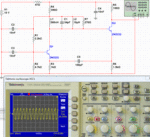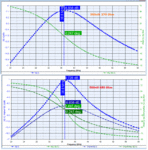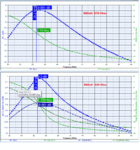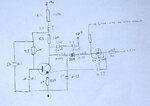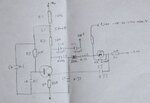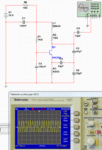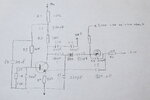hafrse
Full Member level 3

Update:
Rebuilt the circuit with new components , all are none SMD type now, same problem as before, it will only oscillate at the base of the right transistor , about 1.2v, sometimes not, I need to touch the conponets then it starts again. at c112 (supposed to b ethe output , will oscillate hardly if I touch the circuit . I do not have any bias voltage (-5.2v) nor tune voltage attached. Question here, do I realy need the offset voltage and the tune voltage while I am testing the oscillator in a stand alone state ? does the oscillator oscillate without them?
I am using high transition frequency transistors BF959 , also Iam using a 470 nH for the 560 nH , I do not hav ethe 560nH value at my site.
I also tried to shorten the varicap and the 560nf inductor to the left of it to match the simulation diagram. but did not get any oscillations at all.
Regards
George
Rebuilt the circuit with new components , all are none SMD type now, same problem as before, it will only oscillate at the base of the right transistor , about 1.2v, sometimes not, I need to touch the conponets then it starts again. at c112 (supposed to b ethe output , will oscillate hardly if I touch the circuit . I do not have any bias voltage (-5.2v) nor tune voltage attached. Question here, do I realy need the offset voltage and the tune voltage while I am testing the oscillator in a stand alone state ? does the oscillator oscillate without them?
I am using high transition frequency transistors BF959 , also Iam using a 470 nH for the 560 nH , I do not hav ethe 560nH value at my site.
I also tried to shorten the varicap and the 560nf inductor to the left of it to match the simulation diagram. but did not get any oscillations at all.
Regards
George
Last edited:

